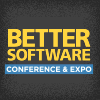Better Software Conference & EXPO 2009

PRESENTATIONS
|
Identify and Maximize Business Value in Development
Organizations often invest great sums of money and talent in software projects-often to no good end. A key factor is that many software managers and project teams have, at best, a cursory understanding of expected benefits and little or no quantifiable information about how to evaluate project outcomes-other than cost and end-date targets. |
|
|
In Defense of Waterfall: Deconstructing the Agile Manifesto
A long history of failed software projects using traditional waterfall methodologies was one inspiration for agile development methods. Regarded as novel and even radical a decade ago, agile methods are now widely adopted. Ken Katz's personal experiences do not lead him to support the proposition that waterfall is doomed to the discard pile of development methods. He has a solid track record of managing projects successfully with waterfall. |
|
|
Integrating Security Testing into the QA Process
Although organizations have vastly increased their efforts to secure operating systems and networks from attackers, most have neglected the security of their applications-making them the weakest link in their overall security chain. By some industry estimates, 75 percent of security attacks now focus on the application layer. All too often, the departmental responsibility for verifying application security is not defined, and security within the SDLC is either addressed too late or not at all. |
|
|
Introducing Change, Avoiding Dysfunction
Change can be painful, but staying stagnant can hurt even more. As a manager, how do you decide what should change and how do you know if your organization is ready? When managers seek to improve by introducing new practices such as agile, CMMI, or others, what roadblocks can cause their organizations and teams to reject change-or even worse, to spiral into dysfunction? Michael Mah presents examples of managers who have successfully overcome problems introducing change, plus a few examples of managers who weren't so fortunate. |

Michael Mah, QSM Associates, Inc. |
|
Learning to Learn: What You Didn't Learn in School and Why
From taking our first steps and saying our first words, through kindergarten, grade school, and college, we are praised, rewarded, and judged on our ability to learn. When we finish formal education and enter the workplace, we discover that we have to start learning all over again. Outside of work, we learn and practice skills in our leisure time-maybe a sport or something artistic, a musical instrument, or beating the monster at the end of level 17. |

Dan North, ThoughtWorks Inc |
|
Making Smart Choices: Strategies for CMMI Adoption
The CMMI® model was written to apply to a variety of project environments-defense, commercial, development, maintenance, services, and small to large project teams. Its authors used words like "adequate,” "appropriate," "as needed," and "selected." When a project or organization adopts the CMMI® model for process improvement, they consciously or unconsciously make choices about how it will be implemented-scope, scale, documentation, and decision-making to name a few. |
|
|
Managing Software Debt
In Scrum, the product backlog is used to prioritize feature implementation based on business value. The product owner manages the product backlog to direct implementation for the greatest possible business value. However, product backlogs that list only system features do not consider the decay of software over time. The resulting “software debt” can eventually sink a project or even an entire product or organization. Chris Sterling explains ways to manage software debt with an eye on the long-term vision and success of the product. |
|
|
Mature Agile Teams: Sixteen Essential Patterns
any teams have a relatively easy time adopting the tactical aspects of the agile methodologies. Usually a few classes, some tools' introduction, and a bit of practice lead teams toward a fairly efficient and effective adoption. However, these teams quite often are simply going through the motions and neither maximizing their agile performance nor delivering as much value as they could. |
|
|
Quality Metrics for Testers: Evaluating Our Products, Evaluting Ourselves
As testers, we focus our efforts on measuring the quality of our organization's products. We count defects and list them by severity; we compute defect density; we examine the changes in those metrics over time for trends, and we chart customer satisfaction. While these are important, Lee Copeland suggests that to reach a higher level of testing maturity, we must apply similar measurements to ourselves. |

Lee Copeland, Software Quality Engineering |
|
Software as a Service: What You Need to Know
Many familiar products, including email, instant messaging, search, and e-commerce sites, are actually implemented as services rather than PC-installed software. The shift to services now extends to everything from office productivity tools to utilities like storage, authentication, manageability, and application hosting. Engineers who want to build highly available services with a positive user experience face unique design, testing, and operational challenges. |
|


